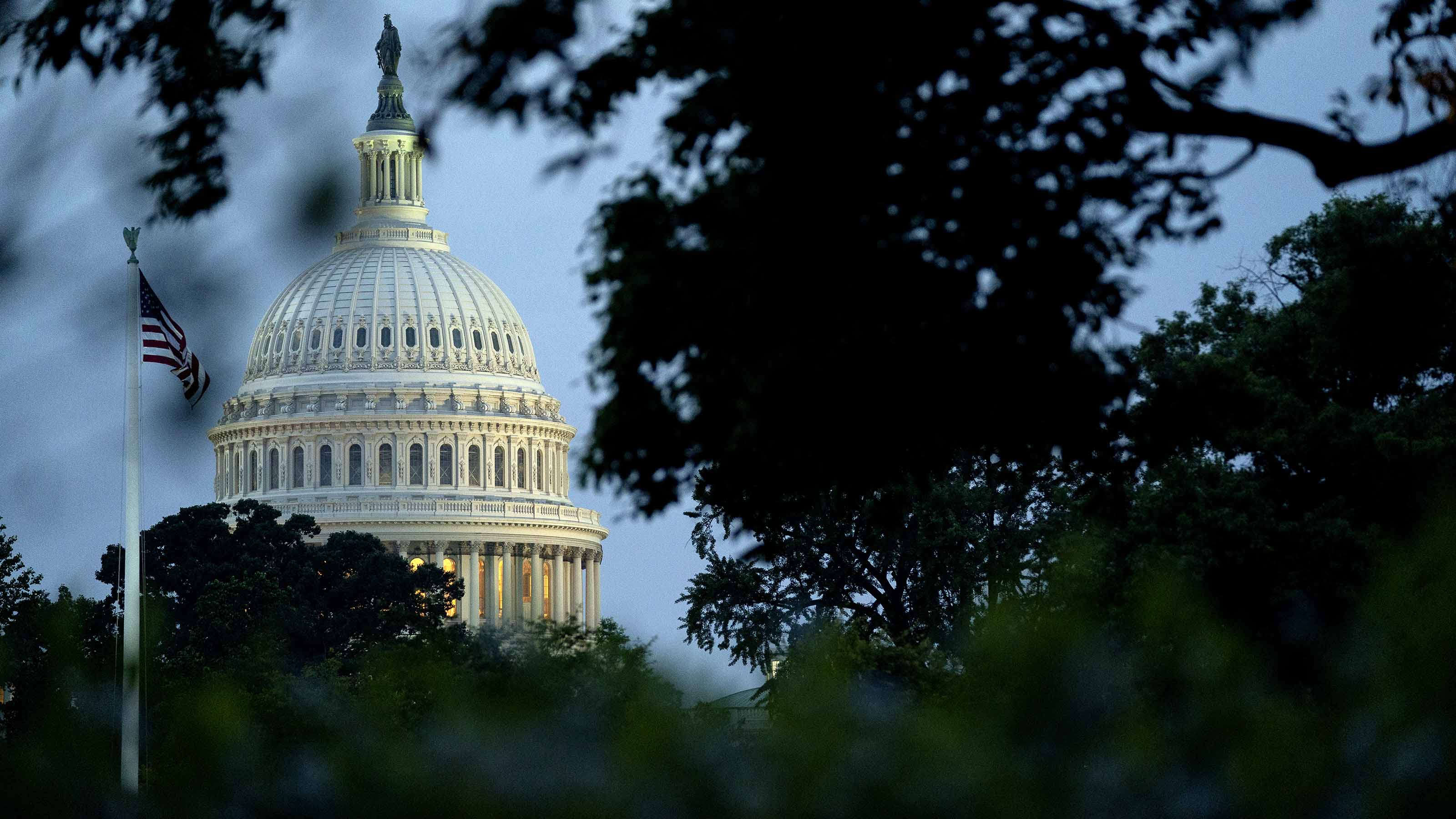A Balanced Federal Budget? Not without Pain
Businesses and individuals who benefit from tax breaks must surrender some self-interest.

If you think it should be easy to balance the federal budget gradually, think again. This year’s shortfall between spending and revenues is heading toward a record $1.6 trillion -- that’s 1,600 billions of dollars. That amounts to 42% of nearly $3.8 trillion in federal outlays, so Washington must borrow 42 cents of each dollar it’s spending. As a percentage of America’s gross domestic product -- the value of what our nation produces each year -- the deficit is at a post–World War II record high of 11% (nearly double the previous modern record of 6% in 1983, coming out of America’s last severe recession).
Forcing the budget into balance too quickly would be risky to the fragile economic recovery. But how about trimming next year’s deficit by, say, 15%? Seems like a reasonable first step in a multiyear belt-tightening crusade. Without significantly higher revenues, that translates to $240 billion of spending cuts this year.
We could accomplish this by cutting every federal expense by 7% (except interest on debt -- can’t trim that). We’re talking defense spending, Social Security checks, Medicare and Medicaid, jobless benefits, food stamps, federal civil service and military pensions, road building, homeland security, disaster relief -- everything.
From just $107.88 $24.99 for Kiplinger Personal Finance
Become a smarter, better informed investor. Subscribe from just $107.88 $24.99, plus get up to 4 Special Issues

Sign up for Kiplinger’s Free Newsletters
Profit and prosper with the best of expert advice on investing, taxes, retirement, personal finance and more - straight to your e-mail.
Profit and prosper with the best of expert advice - straight to your e-mail.
Think you can find $240 billion of one-year savings without touching entitlements? Not likely. You would have to cut military spending by 33% in one year, or eliminate all spending on education, science, space and medical research, welfare, the environment and natural resources, and child nutrition, which together total about $240 billion.
On Capitol Hill, a 15% deficit trim in one year -- which might seem a reasonable goal to you and me -- is considered politically impossible. On the eve of a government shutdown in April, Republicans and Democrats came to a bitterly fought agreement to identify just $50 billion of spending cuts -- a mere 3% of this year’s deficit and a minuscule 1% of total federal spending.
The role of taxes. How about boosting revenues? A big contributor to the current federal deficit was the 18% plunge in tax receipts during the Great Recession of ’08–’09, when individuals and corporations earned a lot less and therefore paid less to Uncle Sam. Federal revenues amounted to about 15% of GDP in 2009, the lowest level since the 1950s and well off the historical norm of 18%. Meanwhile, federal outlays -- bloated by recession-fighting relief and stimulus programs, plus rescues of the financial and auto sectors -- have soared to a record 25% of GDP.
Despite the sluggishness of the current recovery, higher corporate and individual earnings are beginning to swell Washington’s tax receipts. So, could higher revenue from economic growth close the budget gap by itself, without any spending cuts (what economists call “growing our way out of the deficit”)? Maybe, but it would take many years and also a freeze in spending, which is unlikely to happen.
Serious deficit reduction will demand both aggressive spending cuts and higher revenues than projected economic growth will generate under today’s tax code. But higher tax receipts don’t require higher tax rates. There is historical evidence that lower rates on corporate profits, personal income and long-term capital gains -- if coupled with fewer market-distorting tax deductions and credits -- actually boost total revenues. That’s why simplifying our tax code will play a role in deficit reduction. But first, businesses and individuals who benefit from tax breaks must surrender some self-interest.
America has no choice about whether to bring our government spending in line with our revenues. Even if we didn’t feel a moral obligation to future generations, our foreign creditors would insist on it.
But we have lots of choices about how to pull this off, with a combination of spending cuts and higher revenues. Let’s get started.
Columnist Knight Kiplinger is editor in chief of Kiplinger's Personal Finance magazine and of The Kiplinger Letter and Kiplinger.com.
Profit and prosper with the best of Kiplinger's advice on investing, taxes, retirement, personal finance and much more. Delivered daily. Enter your email in the box and click Sign Me Up.

Knight came to Kiplinger in 1983, after 13 years in daily newspaper journalism, the last six as Washington bureau chief of the Ottaway Newspapers division of Dow Jones. A frequent speaker before business audiences, he has appeared on NPR, CNN, Fox and CNBC, among other networks. Knight contributes to the weekly Kiplinger Letter.
-
 It's Beginning to Look a Lot Like a Santa Rally: Stock Market Today
It's Beginning to Look a Lot Like a Santa Rally: Stock Market TodayInvestors, traders and speculators are beginning to like the looks of a potential year-end rally.
-
 The 2026 Retirement Catch-Up Curveball: What High Earners Over 50 Need to Know Now
The 2026 Retirement Catch-Up Curveball: What High Earners Over 50 Need to Know NowUnlock the secrets of the 2026 retirement catch-up provisions: A must-read for high earners aged 50 and above.
-
 How Much a $100K Jumbo CD Earns You
How Much a $100K Jumbo CD Earns YouYou might be surprised at how fast a jumbo CD helps you reach your goals.
-
 What to Expect from the Global Economy in 2026
What to Expect from the Global Economy in 2026The Kiplinger Letter Economic growth across the globe will be highly uneven, with some major economies accelerating while others hit the brakes.
-
 Amid Mounting Uncertainty: Five Forecasts About AI
Amid Mounting Uncertainty: Five Forecasts About AIThe Kiplinger Letter With the risk of overspending on AI data centers hotly debated, here are some forecasts about AI that we can make with some confidence.
-
 Worried About an AI Bubble? Here’s What You Need to Know
Worried About an AI Bubble? Here’s What You Need to KnowThe Kiplinger Letter Though AI is a transformative technology, it’s worth paying attention to the rising economic and financial risks. Here’s some guidance to navigate AI’s future.
-
 Will AI Videos Disrupt Social Media?
Will AI Videos Disrupt Social Media?The Kiplinger Letter With the introduction of OpenAI’s new AI social media app, Sora, the internet is about to be flooded with startling AI-generated videos.
-
 What Services Are Open During the Government Shutdown?
What Services Are Open During the Government Shutdown?The Kiplinger Letter As the shutdown drags on, many basic federal services will increasingly be affected.
-
 The Economy on a Knife's Edge
The Economy on a Knife's EdgeThe Letter GDP is growing, but employers have all but stopped hiring as they watch how the trade war plays out.
-
 Apple Readies for AI Upgrade with New iPhones
Apple Readies for AI Upgrade with New iPhonesThe Kiplinger Letter The tech giant has stumbled when it comes to artificial intelligence, but a new batch of iPhones will help it make headway.
-
 Japan Enters a New Era of Risk and Reform
Japan Enters a New Era of Risk and ReformThe Kiplinger Letter Japan has entered a pivotal moment in its economic history, undertaking ambitious policy and structural reforms to escape from decades of stagnation.